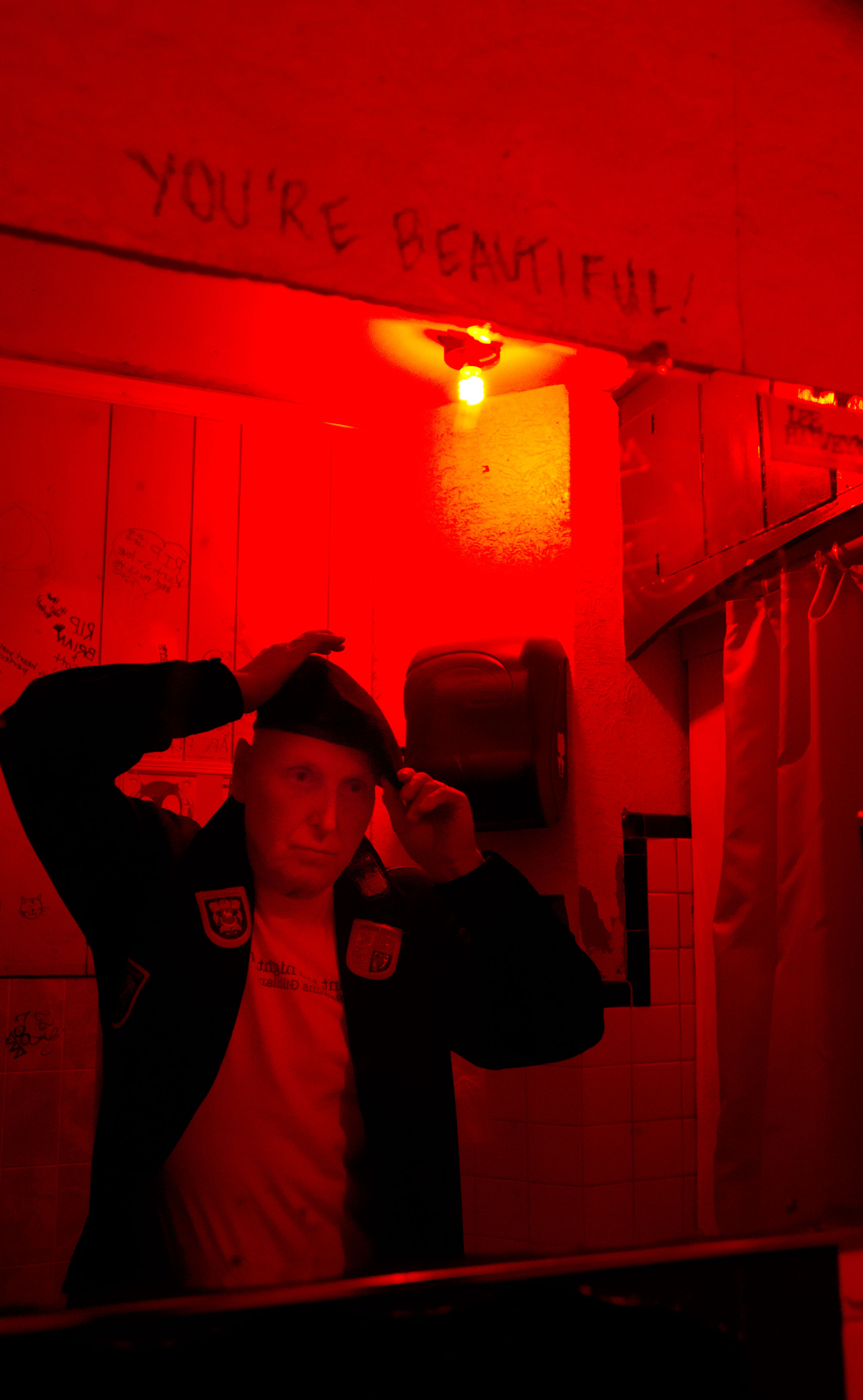A few months ago, I bumped into Rawlins Gilliland at the bar at Lee Harvey’s. I knew of Gilliland from his KERA commentaries, which he delivered in his instantly recognizable, buttery Southern accent. I had also heard about the popular stage show he began performing in May 2014, often to sellout crowds. He returns to the Kessler Theater on April 18 with a new slate of material for his 70th birthday celebration.
When I asked him how he ended up with so many yarns, he launched into his fascinating and hilarious life story—from growing up with bohemian parents in Dallas, to hanging at the legendary Stonewall in New York, hopping planes in Turkey, witnessing the JFK assassination, and surviving multiple murder attempts. Gilliland is something like Dallas’ Forrest Gump, seemingly present at every historic twist and turn. As a drinking companion, he is barstool gold, full of tall tales. And yet, Gilliland insists that he keeps his best stories from the barroom. “You gotta be protective of your good stories,” he says.
How did one person end up with this many fascinating life stories?
Once I started doing these shows, I really had to ask myself that question. In the first show, I talk about how, in 1965, I happened to be driving down Northwest Highway during an ice storm, and I thought I saw something that looked odd, so I stopped. I ended up witnessing a gang rape and a murder, and then was taken hostage and left for dead the next morning. Two things happened there. One, I noticed something other people might not have. Second, a lot of people will see things, but they won’t stop. The third reason I think I have so many stories is because I look at life through a poet’s lens.
Is that your earliest story?
No, the first one takes place when I’m 5. And my parents are giving a cocktail party, and I’m pretending to be the typical 5-year-old who’s disengaged and watching nothing—and I’m taking every damn thing in. I mean, you’ve got Tennessee Williams over there, and he’s holding hands with the guy who’s an SMU student who grew up to be Aaron Spelling.
What was Tennessee Williams doing at your childhood home?
You know, my house was like a mecca for the arts. My dad was with the Symphony, had played with Benny Goodman; my mother was a book reviewer for the Dallas Morning News. Everybody dropped by over there.
Do you think that childhood environment contributed to your thirst for adventure?
Maybe that type of DNA. To this day, I’ll be invited to a party and I’ll think, “I’m going to go and risk wondering why I went instead of not go and wish later on that I had.” That’s a big part of it right there. And I’m a full-blown adventurer. An adventurer, as I defined it in my last show, is someone who is more fascinated by what they might discover than they are fearful of what might happen. In the first show, I talk about how I stowed away on planes in the early ’70s.

The first time you jumped a plane, was it out of necessity?
No, I was sleeping in Central Park. I’m homeless. I ended up in New York after backpacking through Chicago to Montreal. New York was really dangerous then. It was really run-down. But I thought, “Well, who in the world’s going to kill me for anything in Central Park?” It was early July, and it was getting so hot. And all over New York, American Airlines had these signs saying “Now, non-stop to Waikiki.” I just kept looking at that and thinking, just like I kind of did when I was 14, “I’ve gotta figure this out. How do I get to Hawaii?”
Wait, what happened when you were 14?
I kept seeing in Life magazine about how Acapulco was the epicenter of the jet set. In 1959, American Airlines was advertising on this all-night jazz show, and I would listen to all this about going to Acapulco. I saw my sister’s new credit card for Neiman Marcus, and I bought a ticket. I came back with a tan and a lot of money and some great stories, which I’m finally telling on this show.
If you used your sister’s credit card to get to Acapulco, how’d you come back with money?
Well, you have to go to the show to find out.





